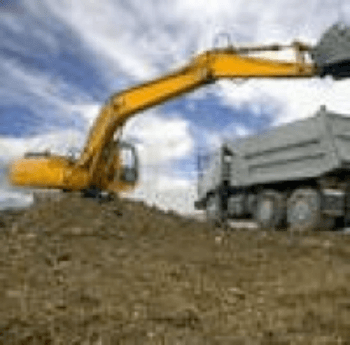
INNSA Standard
DIG AND DUMP FOR JAPANESE KNOTWEED
Where no other methods of on-site management of Japanese knotweed are suitable for a particular site, a controlled excavation and removal off site to a licensed facility (“dig and dump”) may be the only viable option.
Prior to works, the area of Japanese knotweed infestation should be suitably demarcated to prevent access and disturbance by site traffic and operative. Disturbance may lead to further cross-contamination.
Furthermore, it is essential that the waste is classified by the landfill operator prior to the material being exported from site. This can be done by providing a chemical analysis of the soil, which should be carried out by a UKAS accredited lab and transported under controlled conditions. This information may be available from the site investigation report for the site.
Where possible, excavation should take place from outside the area of infestation to prevent plant tracks or tyres coming into contact with Japanese knotweed contaminated soil. When working on large infestations or tight sites, this may not be possible. In this scenario, consideration should be given to laying a temporary blinding layer of suitable material or sacrificial root barrier to prevent contact between Japanese knotweed material and plant. As a last resort, plant and machinery coming into contact with Japanese knotweed contaminated material should be thoroughly inspected and decontaminated by a suitably-qualified person before each time they leave the contaminated area.
Consideration should be given when moving the excavated material from excavator to proposed receptacle so that material is not lost during transport. Equipment (such as dumper truckers) should be under-filled to prevent this scenario.
Excavation should proceed to the extent of rhizome network. When supervised by a suitably-qualified person, the volume of excavated material can be significantly reduced compared to previous Environment Agency recommendation of 7m of soils in all directions. On completion of each stage of the excavation, further material should be loosened and inspected for the presence of Japanese knotweed material.
When no further Japanese knotweed material is encountered, the excavation may be prepared for backfilling or subsequent works. The final depth of rhizome penetration is likely to vary, depending on ground conditions and porosity. It is essential that all material is removed unless a suitable root barrier is to be subsequently installed.
It is recommended that a herbicide monitoring regime is implemented following any excavation works in case any small fragments of Japanese knotweed rhizomes remain in the soil. Suitable herbicides applied by qualified persons can prevent the growth from small rhizome fragments from becoming re-established.
Japanese knotweed material to be transported off-site is considered to be controlled waste. It is essential that a full set of duty of care and waste transfer paperwork is in place to confirm material has been managed in a appropriate manner. Any persons transporting Japanese knotweed soils must be a registered waste carrier and a copy of their license should be presented to the waste producer prior to works commencing.
Any landfill operator must be licensed to accept Japanese knotweed and it is the waste producer’s responsibility to ensure that the contaminated material is transported and disposed correctly. Records of how the material was transported must be kept in case any appointed representative of the relevant local agencies wishes to verify the waste’s final location.
Further information on your responsibilities in relation to waste can be found at https://www/gov.uk/managing-your-waste-an-overview
